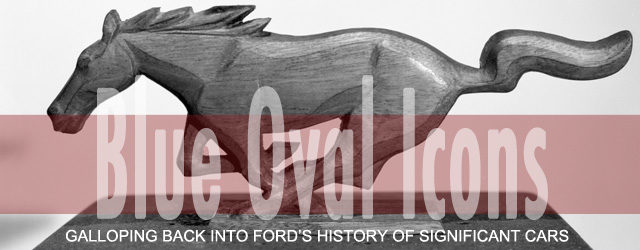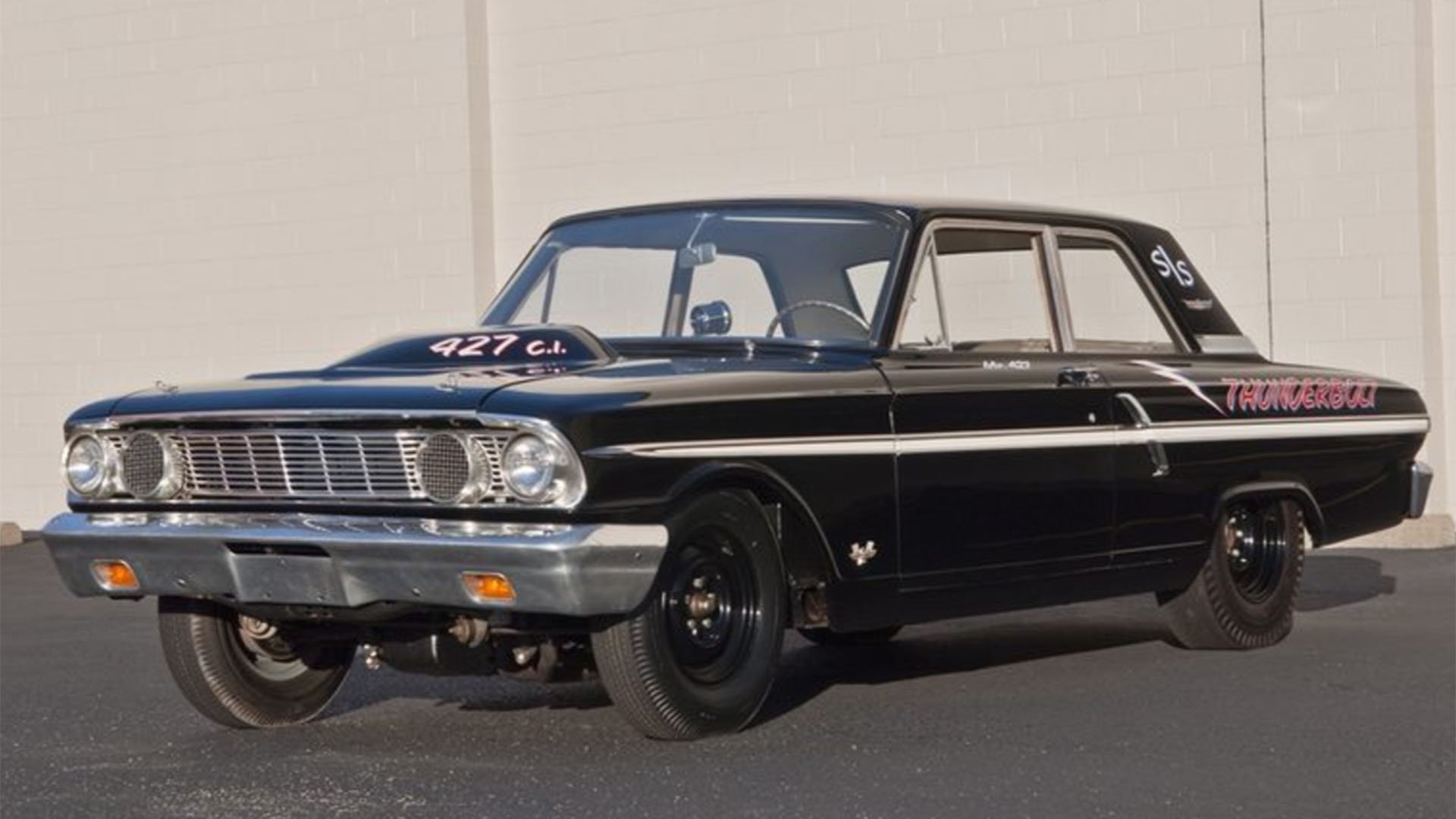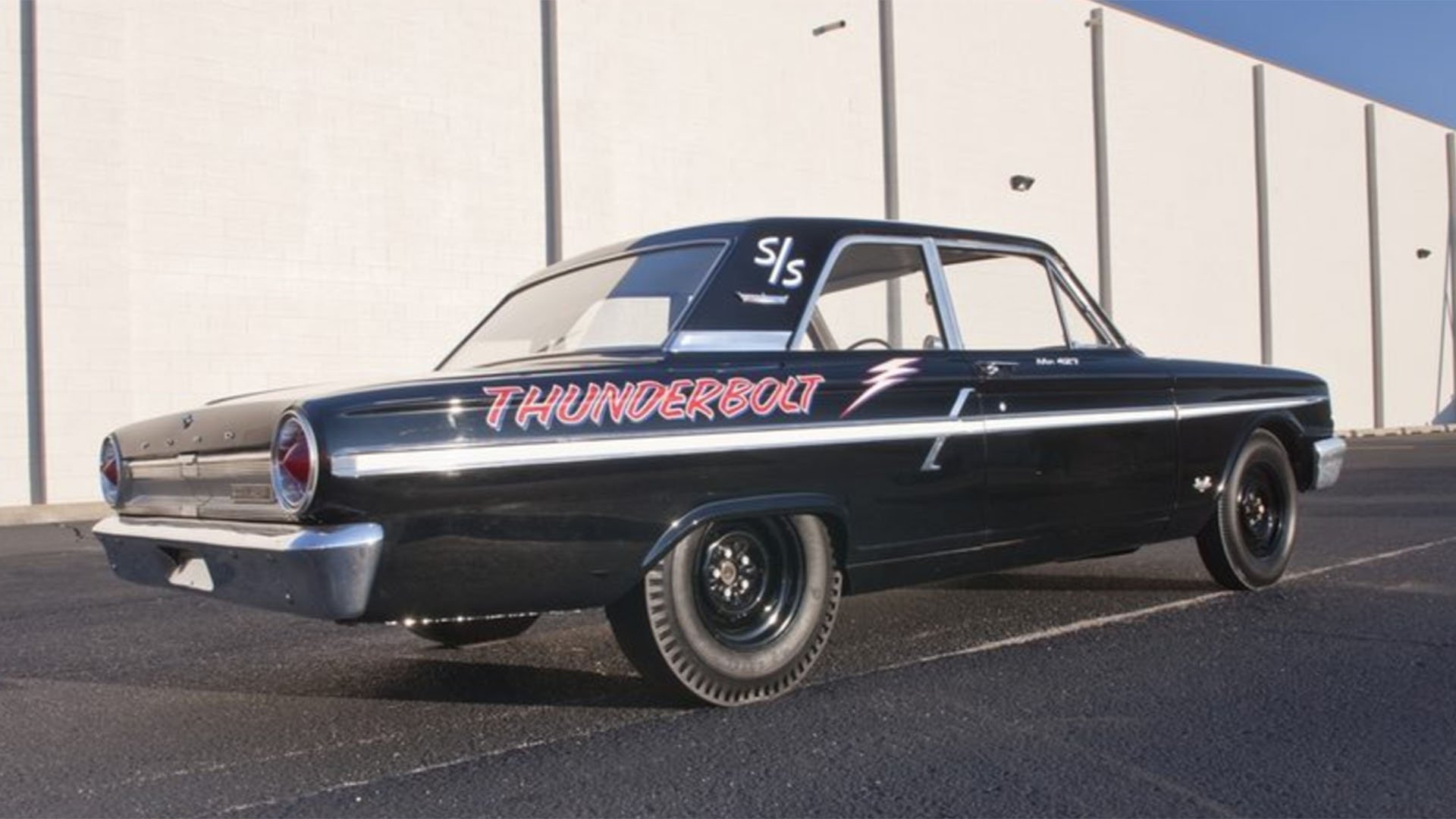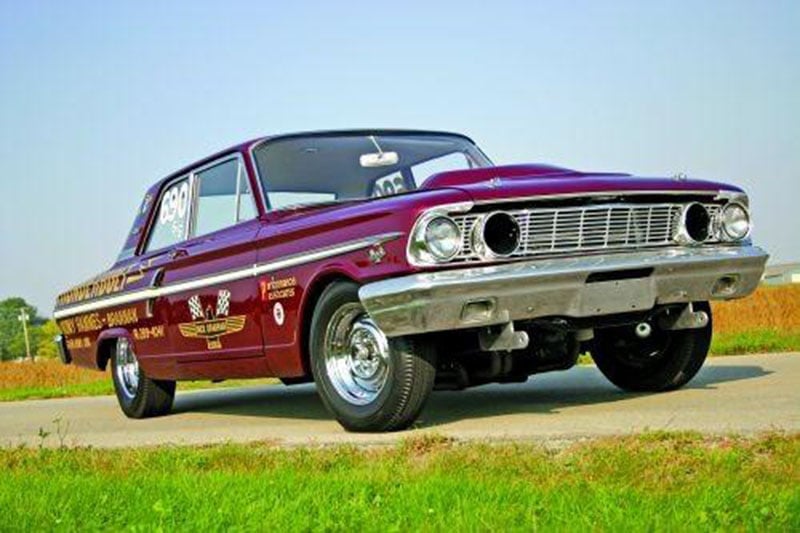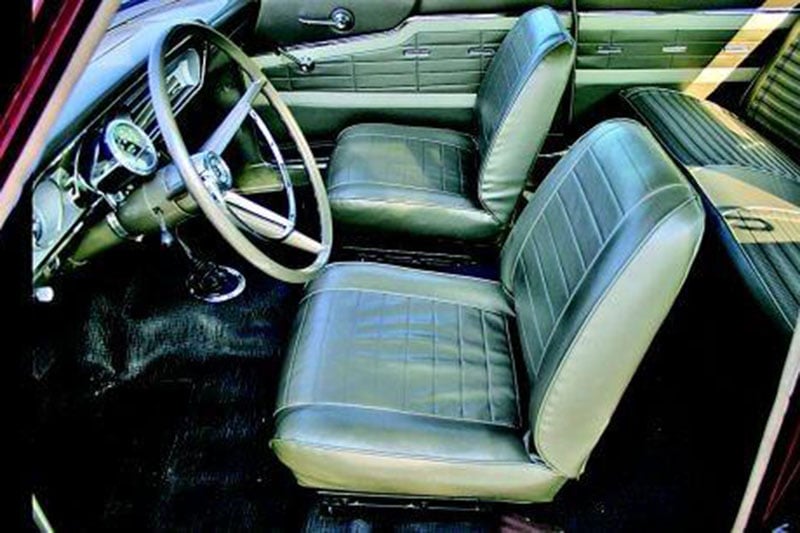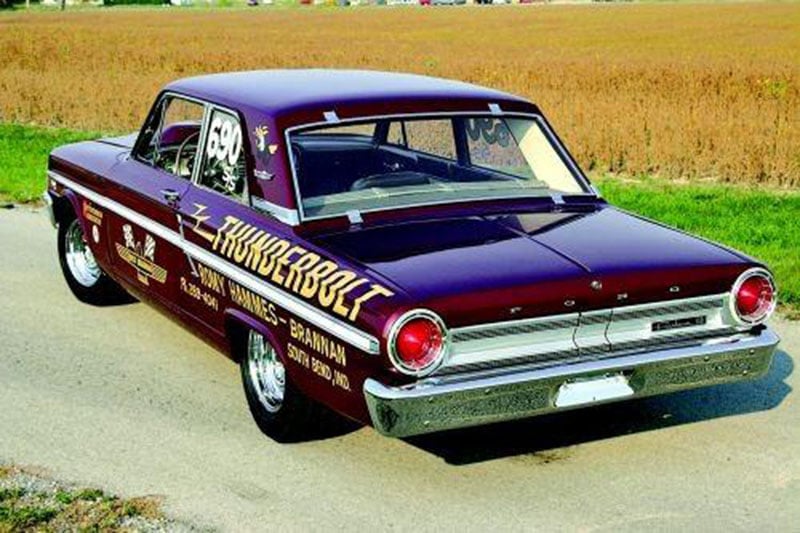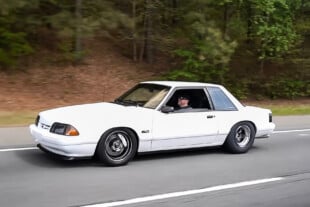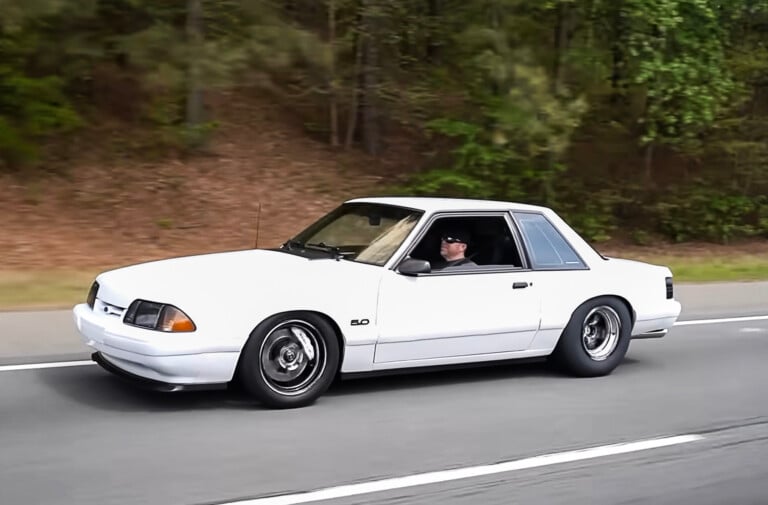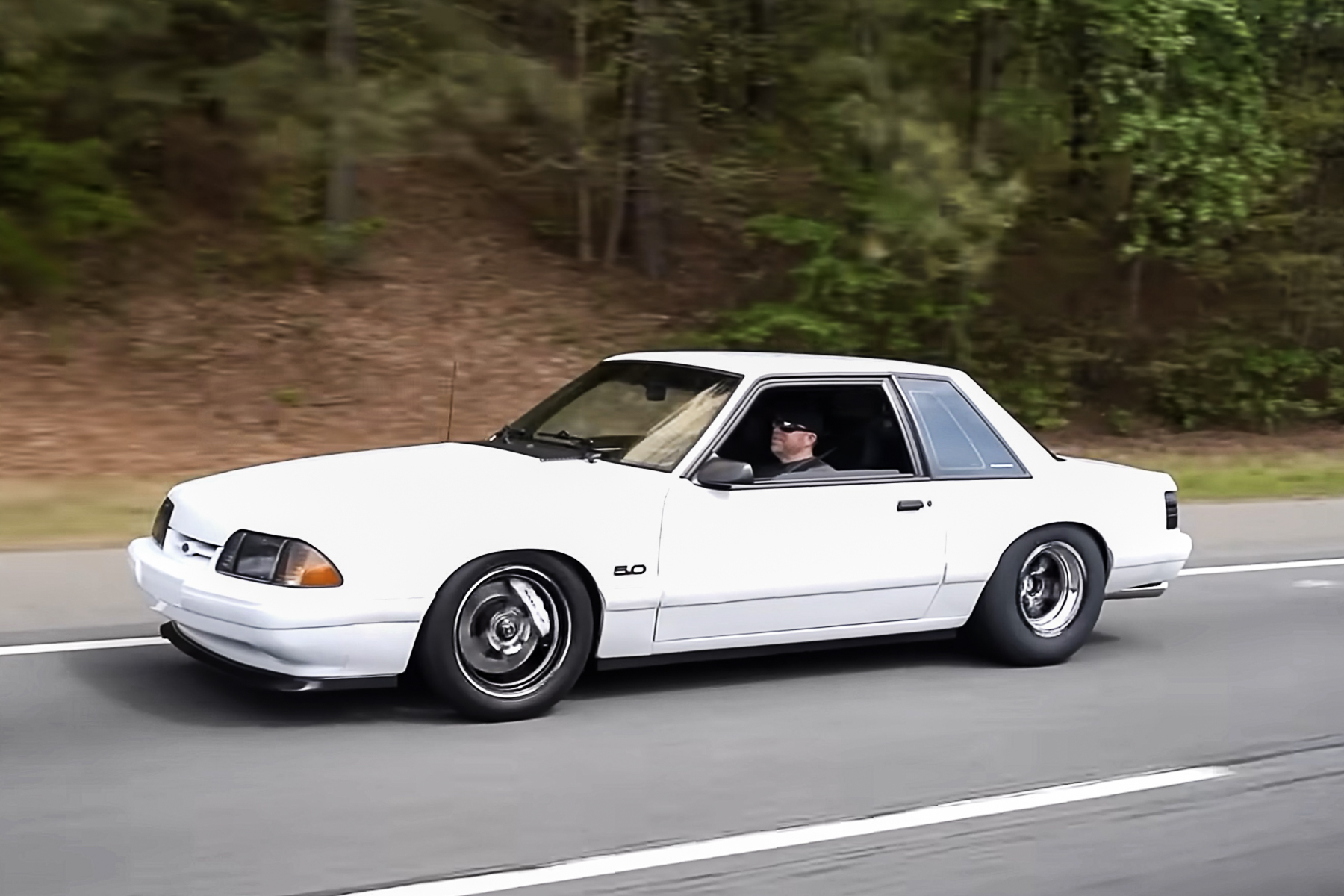With the muscle car era beginning to take shape and a youth-oriented buying public becoming increasingly enthralled with performance in the early 1960s, the NHRA’s Super Stock and Factory Experimental classes became sales battlegrounds for Detroit’s Big Three and led to the creation of the 1964 Ford Fairlane Thunderbolt.
Both factory backed and privateer team successes often translated into increased sales for the auto manufacturers involved, and corporate funding for those racing efforts resulted in a rapidly evolving and highly competitive performance landscape; especially at the drag strip, where quarter-mile time slips provided an easily-digestible metric for fans to bench race their road-going counterparts against one another.
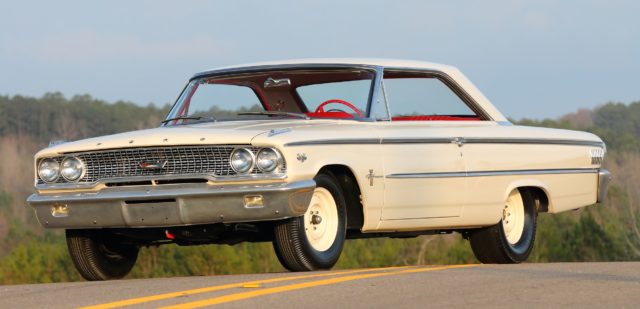
While the Galaxie (seen above) had done well for Ford on the high-speed banked tracks of NASCAR, getting this full sized coupe down to fighting weight with the 3,200-pound intermediates competing in Super Stock proved to be a bridge too far, so Ford started looking at smaller two-doors that could take its place for the 1964 season. Compared to Ford’s full-sized two door, the Fairlane was a whole foot shorter in overall length, hundreds of pounds lighter, and sported a wheelbase that was three and half inches less than that of the Galaxie. (Photo Credit: Hemmings)
As classes like Super Stock gained more and more public visibility, teams began to hunt for every last scrap of performance they could eke out of their cars.
So, while Chrysler’s new 426 Hemi motor was a notable issue to contend with in the 1963 race season, competitors’ models like the Pontiac Tempest and Plymouth Savoy were perhaps a bigger problem for Ford’s racing efforts, as the Blue Oval had been campaigning the significantly larger and heavier Galaxie coupe in both drag racing and the NASCAR series. However, the 1964 race season would see a new Ford racer enter the fray that could give the other teams real cause for concern.
An Intermediate Lightweight
With a wheelbase that was 3 1/2 inches shorter and a foot less length overall, Ford’s intermediate-body Fairlane was much better suited to drag-racing duty. It was also significantly lighter than the Galaxie in stock trim, but Ford knew that simply shoehorning a big motor into Fairlane wasn’t going to be enough to keep a competitive advantage in the Super Stock class.
The Thunderbolt was a case in which Ford looked to every element of the equation to make the quickest production-based, intermediate body drag racer they could build in a reasonable amount of time. They started with a weight reduction strategy that removed any and all content from the car that did not serve a purpose in drag racing, while also replacing numerous steel body components with fiberglass or aluminum in the case of the front bumper, which was changed over from fiberglass after the initial run of Thunderbolt builds due to a change in the NHRA rulebook. (Photo Credit: Mecum)
To that end, the Fairlane went on an everything-must-go diet, stripping the sound deadening material, carpeting, spare tire, radio, heater, and anything else that wasn’t absolutely vital to quarter mile performance from the car. The stock bench seat was replaced by a pair of lightweight buckets, while fiberglass doors, hood, front fenders, and front bumper replaced the standard body panels and Plexiglass would be used for the side and rear windows rather than the standard glass.
The inner headlights of the Fairlane Thunderbolt were replaced by ducting that fed the motor's ram air induction system, a setup which necessitated the creation of the "Teardrop" domed hood for clearance. The interior of the Thunderbolt was a no-frills affair devoid of sound deadening, carpeting, and any content that wasn't necessary for the mechanical functions of the car. To aid in weight transfer at launch (and probably because there was no room left in the engine bay after the 427 was installed), the battery was relocated to the trunk of the car. (Photo Credit: Hemmings)
The High-Riser 427ci motor destined for the Thunderbolt was laughably underrated at 425 horsepower.
Sporting a 12:1 compression ratio; dual four-barrel carburetors; equal-length, long-tube headers; and ram-air induction; the High-Riser 427ci motor destined for the Thunderbolt was laughably underrated at 425 horsepower — estimates put the figure at well over 500 — and could be had with either a four-speed manual gearbox with a final drive ratio of 4:57.1 or a three-speed automatic with a 4:44.1 final drive.
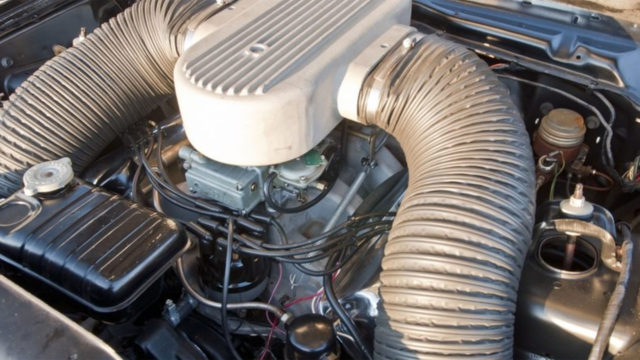
The High Rise 427 — like many high-output performance motors of the era — was grossly underrated at 425 horsepower, reportedly due to insurance regulation concerns. Regardless of its true output, it was far more motor than Ford had originally intended for the Fairlane’s engine bay, which had been designed for Windsor engines. To shoehorn the 427 FE in there, engineers needed to relocate some of the car’s front suspension components, while strengthening the suspension’s mounting locations was also required. Special equal-length headers were snaked through the Fairlane’s cramped engine bay. (Photo Credit: Mecum)
Since the FE block 427 was never intended for Ford’s intermediate-bodied cars, shoving it into an engine bay designed for Windsor motors was a tricky task. Accordingly, the chassis tweaks were even more significant up front, where Ford engineers relocated suspension components and added additional reinforcement measures providing clearance and proper strengthening for the behemoth, big-block V8 they’d be using in the Fairlane Thunderbolt. The standard hood would also be replaced with the now-iconic “Teardrop” hood, which provided clearance for the ram air system while also functioning as a heat extractor.
Considering how extensive the modifications required to turn a standard Fairlane into a Thunderbolt were, standard Fairlane 500s were sent over from the Ford factory to Dearborn Steel and Tubing for the conversion, where the first 11 Thunderbolts were built by hand before quickly being sent out to race teams.
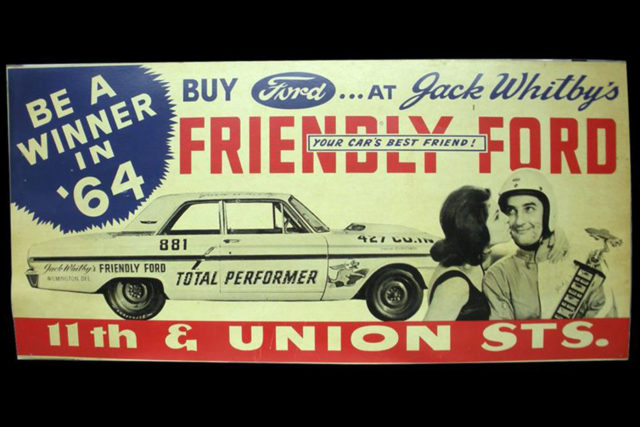
Although the Thunderbolt as a package was designed strictly for drag strip use, especially considering the final drive ratios installed in the cars, it was technically road legal. As such, it’s not hard to imagine that some of these cars found their way onto Woodward Avenue on more than a few nights in the mid-’60s. (Photo Credit: Barrett Jackson)
The build process would be slightly streamlined after that, with Ford sending partially assembled Fairlane 500s to DST to complete the subsequent 89 cars that were built in total.
The benefits of Ford’s efforts to build a quarter mile screamer quickly became obvious once the Thunderbolt was unleashed upon the world, with racers around the country dishing out 11-second passes shortly thereafter. Driver Butch Leal, at the helm of the Thompson-owned #7 Thunderbolt, would go on to win the NHRA Super Stock class title that year.
Legacy
Thunderbolt Specs
Displacement: 427 cubic inches
Bore x Stroke: 4.23×3.78 inches
Compression ratio: 13:1
Horsepower: 425 at 6,000 rpm
Torque: 480 lb-ft at 3,700 rpm
Given its legendary performance and scarcity, it comes as little surprise that original Thunderbolts command a hefty sum today, with recent auctions seeing these cars valued at well over a quarter million dollars.
While the latter 89 cars were painted Wimbledon White, the first 11 hand-built cars have the notable distinction of being dressed in Ford’s Vintage Burgundy hue, making these cars the most sought after examples of the breed.
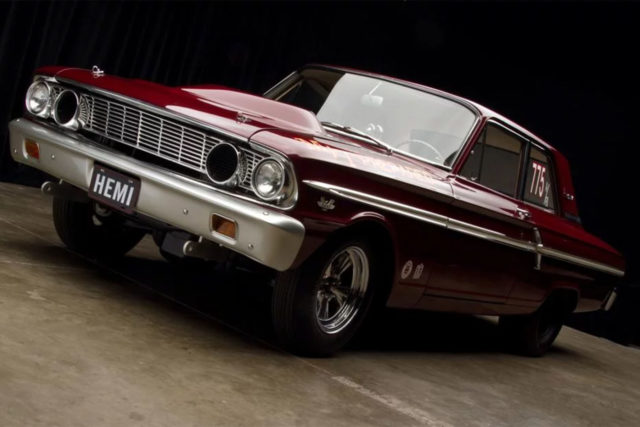
Upon taking delivery of his Fairlane Thunderbolts, Mickey Thompson immediately set about finding ways to make the cars even faster. With Ford’s consent, Thompson’s shop developed new aluminum cylinder heads with hemispherical combustion chambers, which required the use of Chrysler 392 pistons on custom connecting rods. The combination proved to be worth the effort and brand comprimise though, as the one-off Thunderbolt would lay down times that were even quicker than the standard cars, though the modifications would move it into the Factory Experiemental class. Image: Barrett Jackson
However, even within that exclusive club of Thunderbolts, Mickey Thompson’s #10 car is an outlier all its own, as his shop cast new aluminum cylinder heads for the 427 big-block with hemispherical combustion chambers similar in design to those on Chrysler’s 392-cube Hemi, turning the car into a one-off, psuedo-Hemi powered Thunberbolt that ran in the A/FX class and recorded a pass of 11.4 at 129 mph at the 1964 Winternationals before the differential checked out in spectacular fashion.
The 1965 race season would see Ford move over to the then-new Mustang for use in the Super Stock and Factory Experimental NHRA classes, making the Thunderbolt a one-year affair as a factory effort. Many racers would continue to campaign the cars in subsequent years though, and countless replicas, clones, and homage cars have been created in the decades since.



